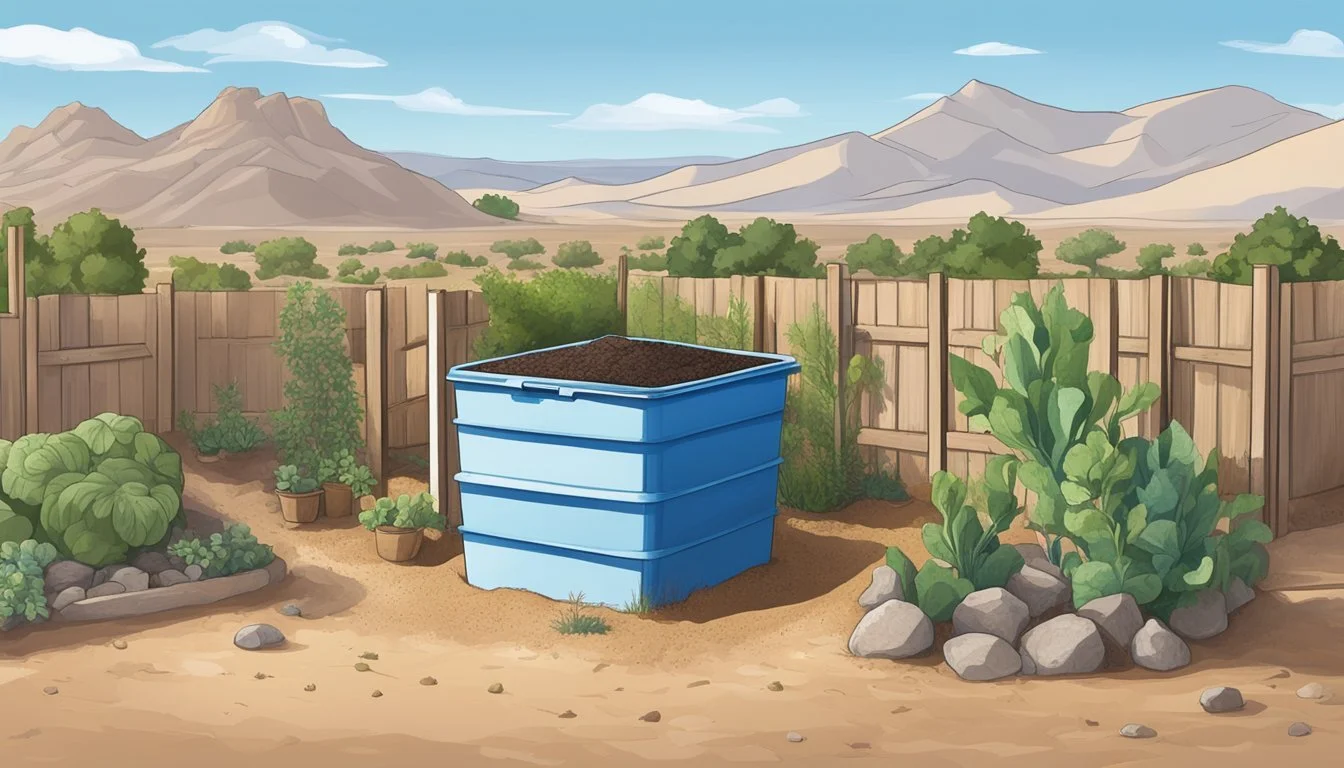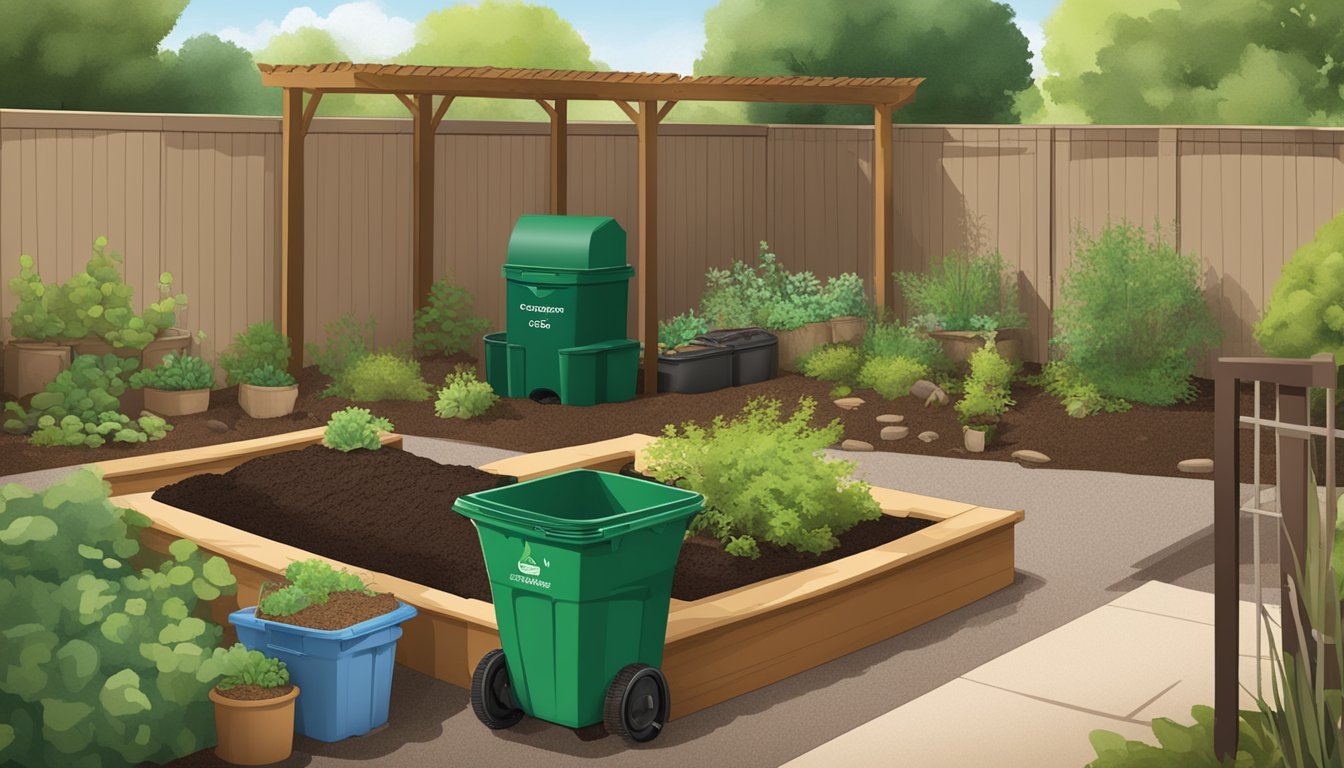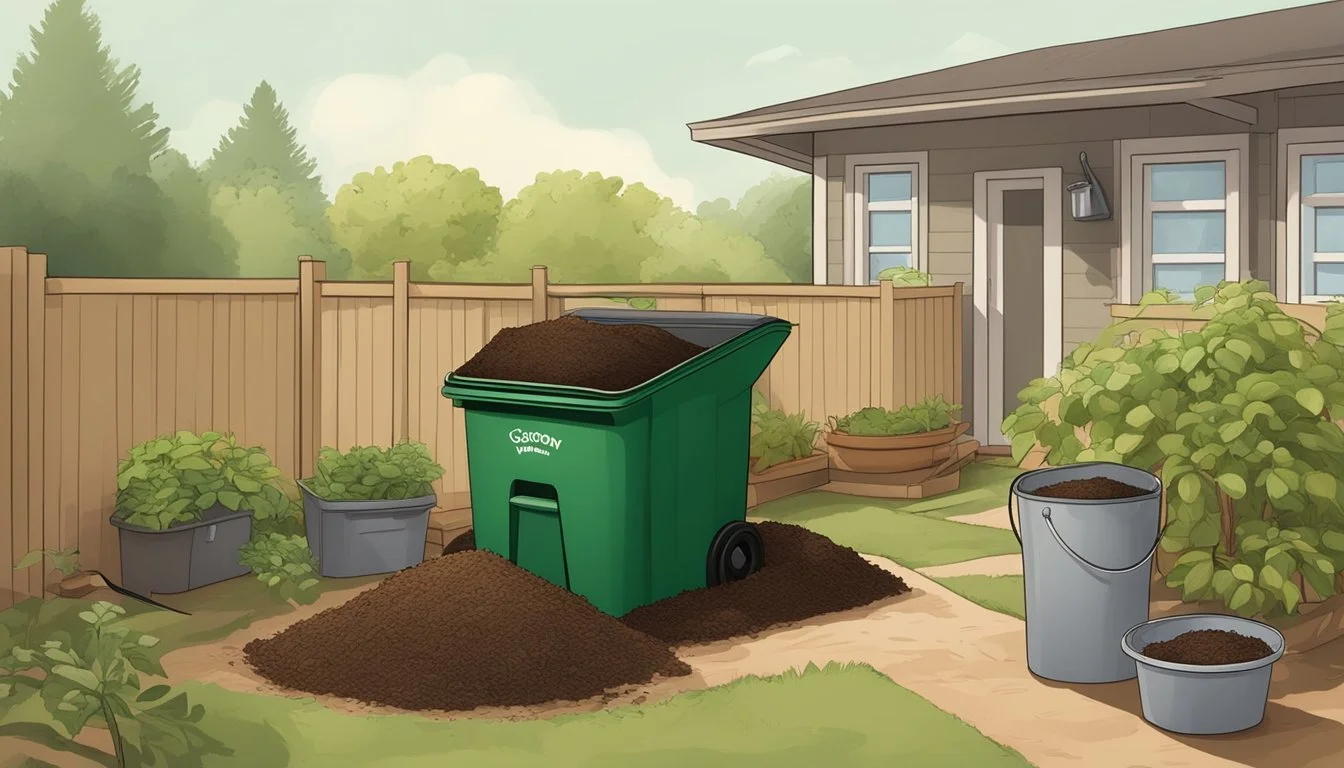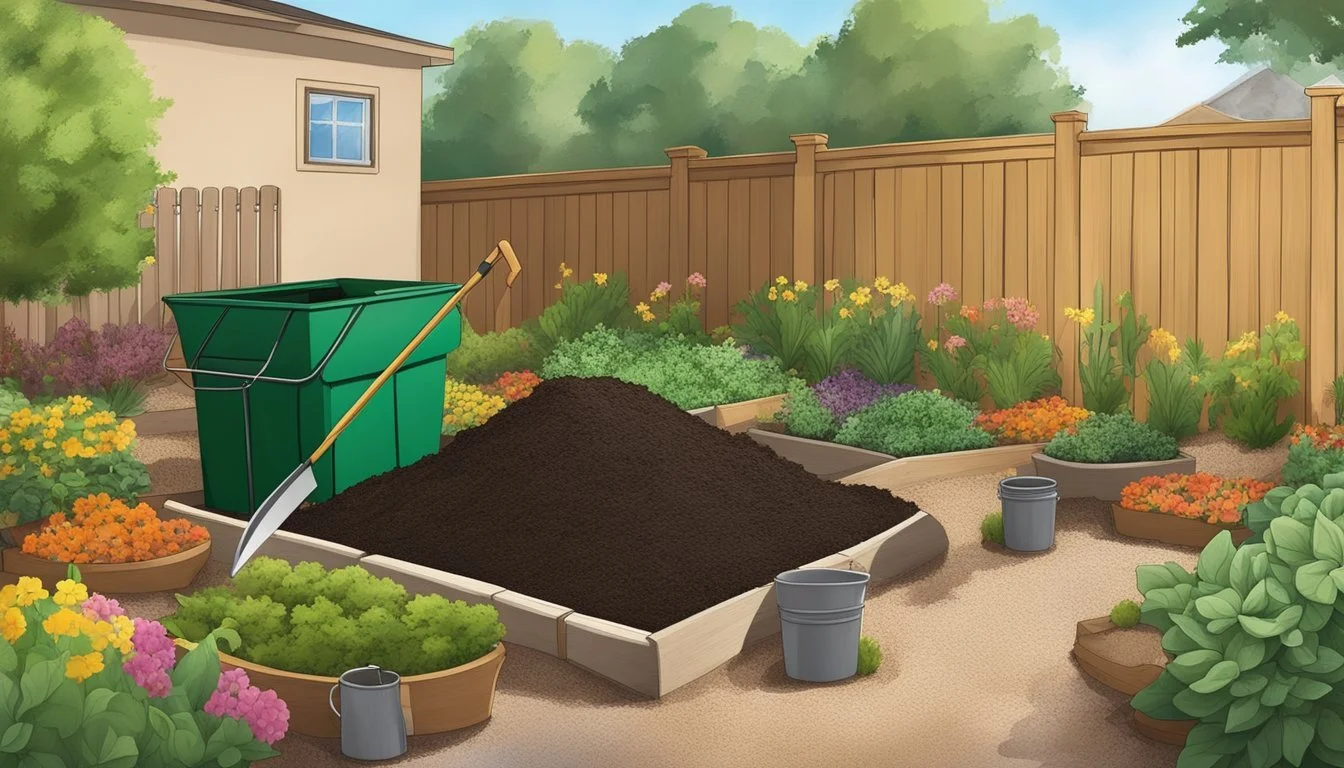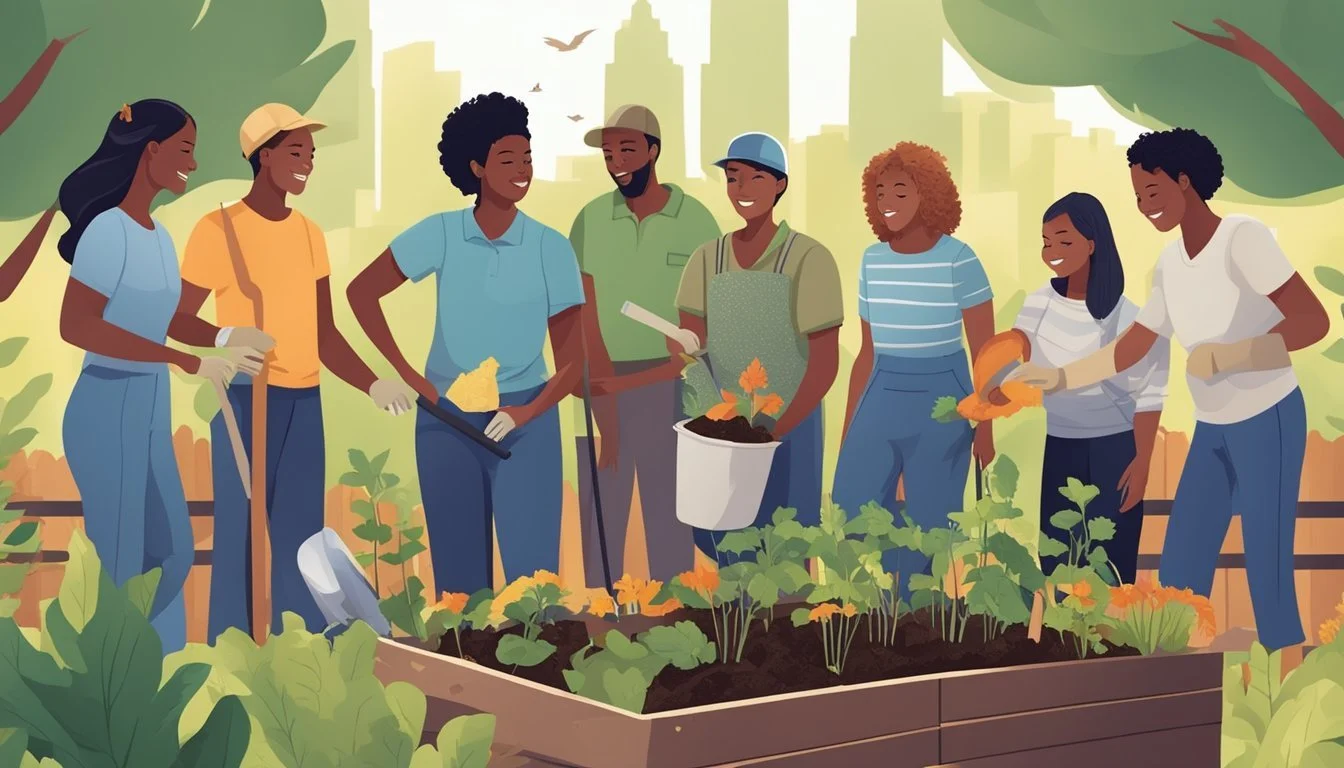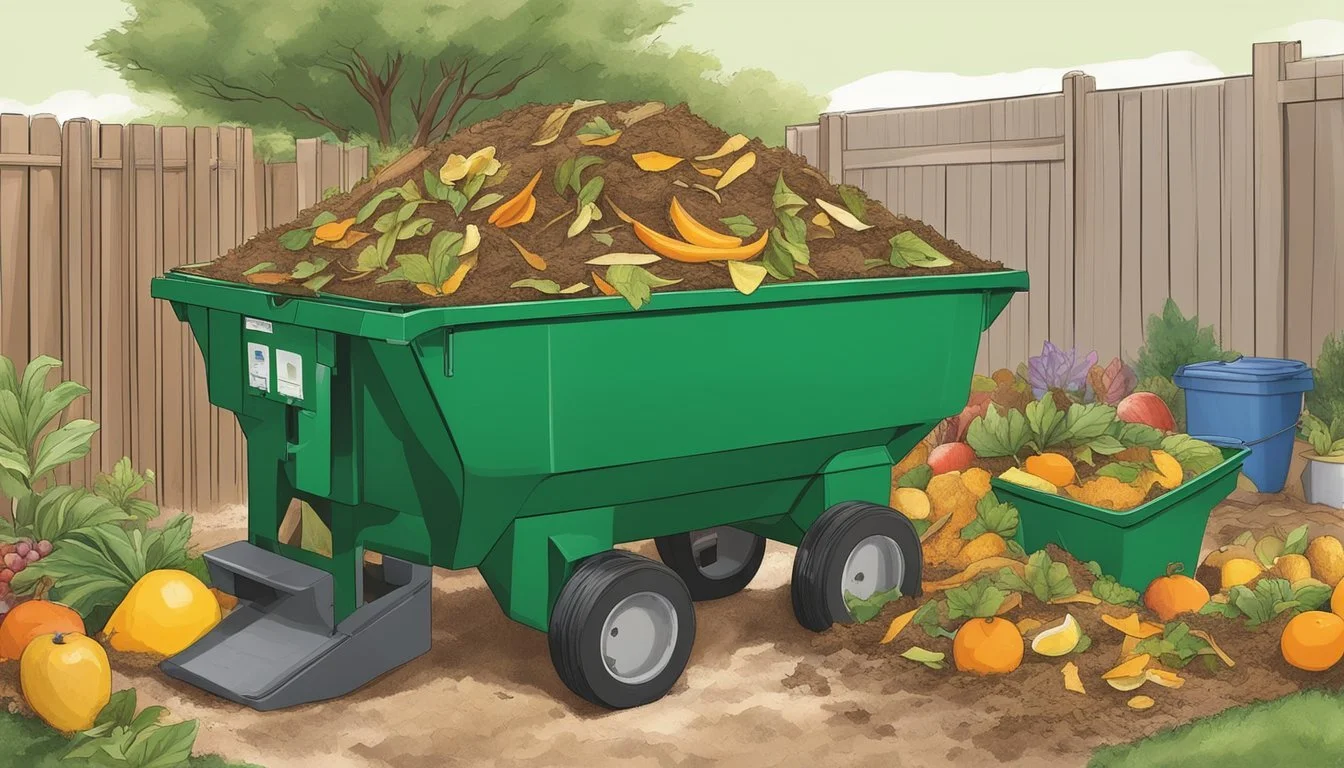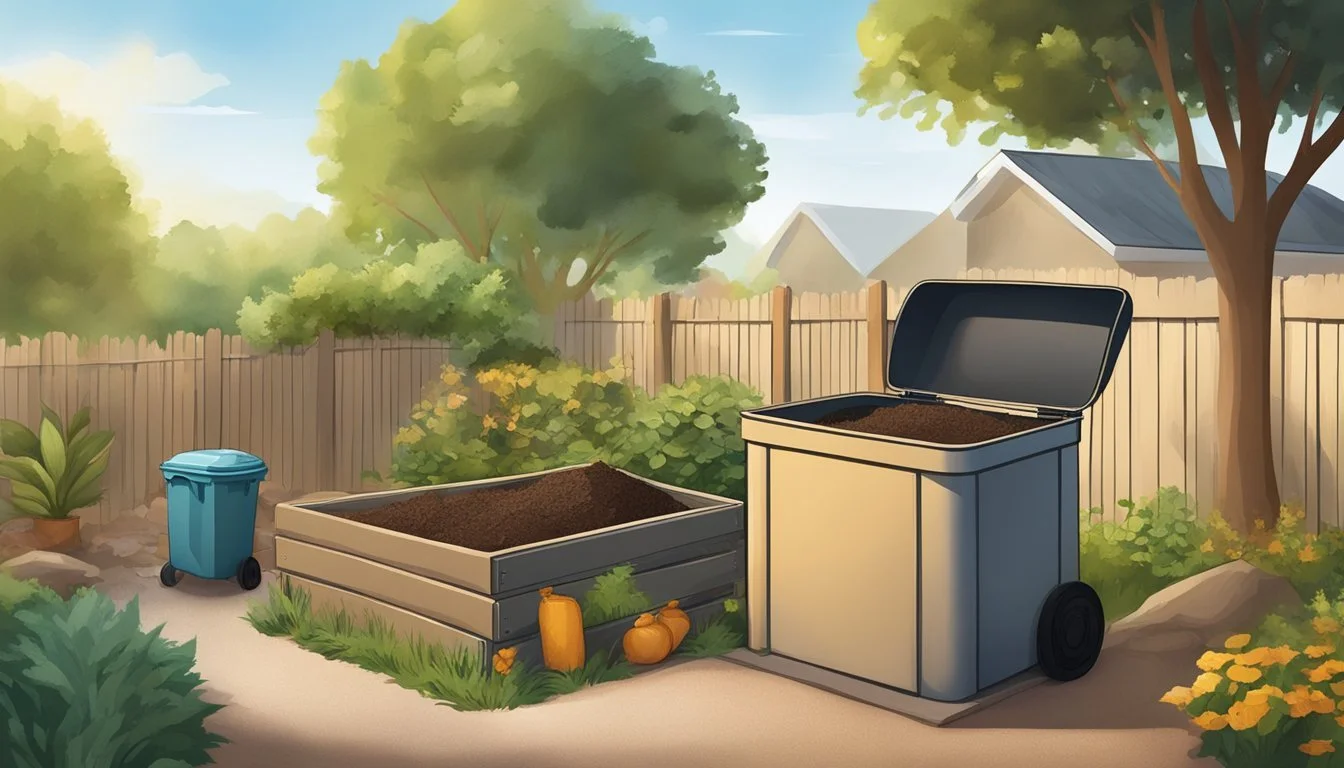Guide to Composting in Rio Rancho, NM
Essential Steps and Benefits
Composting is a sustainable practice that transforms green waste into valuable organic material, benefiting both home gardens and the broader environment. In Rio Rancho, New Mexico, residents have access to composting resources that can help reduce landfill waste while contributing to soil health and conservation. This environmentally conscious city provides opportunities for individuals to engage in composting, whether through home setups or community programs.
Residents of Rio Rancho can participate in green waste recycling programs which include the making of compost and mulch. The Sandoval County Landfill Compost & Mulch Facility located on Iris Road NE is one such resource. Additionally, there are educational avenues for those looking to gain more insight into composting techniques. The Bernalillo County Extension Master Composters offer free classes on the art and science of composting, open to all ages and experience levels.
These initiatives are part of New Mexico's broader commitment to environmental stewardship and waste reduction. By encouraging the conversion of food scraps and yard trimmings into nutrient-rich compost, these programs aim to support sustainable living practices while promoting soil health across the state. For individuals unable to maintain a compost pile, there are options available for organic drop-offs, such as the Larry P. Abraham Agri-Nature Center and Rio Grande Community Farm, demonstrating Rio Rancho's commitment to offering accessible composting solutions to its community.
Basics of Composting
Composting is a practical way to turn organic waste into a valuable soil amendment for gardening and landscaping in Rio Rancho, NM. Through this process, waste is transformed into nutrient-rich soil, benefiting both the environment and garden health.
What Is Composting?
Composting is the biological decomposition of organic materials by microorganisms under controlled conditions to produce compost. Microorganisms such as bacteria, fungi, and other decomposing organisms break down organic matter like leaves, vegetable scraps, and yard trimmings into a dark, earthy, soil-like substance.
Benefits of Composting
The benefits of composting are multifaceted:
Soil Health: Compost enriches the soil, helping retain moisture and suppressing plant diseases and pests.
Waste Reduction: Up to 30% of what we throw away could be composted, reducing the strain on landfills.
Environmental Protection: It reduces the production of methane, a potent greenhouse gas, and leachate formulation from landfills.
Composting Ingredients
A successful compost pile requires a proper balance of the following ingredients:
"Greens" or nitrogen-rich materials like fruit and vegetable scraps or coffee grounds that help to fuel the growth of microorganisms.
"Browns" or carbon-rich materials like dried leaves, straw, or shredded paper that add bulk and allow air to filter through the pile.
Water: The pile should be moist, like a wrung sponge, to support the necessary biological activity.
Air: Oxygen is needed for microorganisms to thrive and break down materials efficiently. Regular turning of the compost pile adds air.
Composting in Rio Rancho: Guidelines and Regulations
In Rio Rancho, NM, residents and businesses need to adhere to specific guidelines and regulations for composting to ensure environmental efficiency and compliance with local laws.
Local Composting Regulations
Residents in Rio Rancho must ensure that organic waste such as yard clippings is disposed of properly. Sandoval County mandates the covering of loads for transport to prevent illegal dumping and additional charges may apply for non-compliance. Composting programs in New Mexico accept various organic materials, ranging from yard trimmings to food scraps, contributing to a valuable soil amendment while diverting waste from the landfill.
Sandoval County Composting Facility
The Sandoval County Composting Facility, located at 2708 Iris Rd NE in Rio Rancho, provides a structured operation for processing green waste. It operates from Monday through Saturday, with closures on Sundays and most holidays. Inclement weather or winds exceeding 25 mph can also cause temporary closures. This facility is key in reducing waste in local landfills, assisting in the control of illegal dumping, and promoting sustainable organic waste management in the community.
Steps to Start Composting at Home
Starting a composting system at home can be a straightforward process. By selecting the appropriate location, setting up your compost bin effectively, and maintaining the process, homeowners in Rio Rancho can turn kitchen scraps and yard waste into nutrient-rich soil.
Choosing the Right Location
Find a spot outdoors that is convenient to access and provides balanced exposure to elements like sunlight and shade. This balance is crucial as too much heat can dry out the compost, and too little may not provide enough warmth for the microorganisms to thrive. The location should also have good drainage to prevent water from accumulating and causing an anaerobic environment.
Setting Up Your Compost Bin
When creating a compost bin:
Select a container that is well-ventilated to allow oxygen to aid in decomposition, with options ranging from open piles to tumbler systems.
Layer your materials, starting with coarse brown matter like twigs for aeration, followed by green waste for nitrogen, and top it with soil to introduce microorganisms.
Regularly add a mix of greens (like vegetable scraps) and browns (such as leaves) to create a balanced compost environment.
Maintaining the Compost Process
Aeration: Turning the compost every week or two introduces oxygen, which is critical for the breakdown process.
Moisture: Compost should be similar to a wrung-out sponge, so add water if it's too dry or dry materials if too wet.
Time: Give the pile time to decompose, which can take anywhere from a few months to over a year, depending on the size and conditions.
By incorporating these steps, you'll be well on your way to creating a successful compost operation at home, benefitting your garden and the environment.
Composting for Gardens and Landscaping
Compost serves as a fundamental supplement for gardens and landscaping in Rio Rancho, NM, offering a nutrient-rich resource for both amateur and professional gardeners. This organic matter enhances soil structure and provides essential nutrients.
Using Compost as Mulch
Gardeners can use compost as mulch to retain soil moisture and regulate temperature. By applying a 2-3 inch layer of compost around plants, they create a barrier that minimizes weed growth and maintains even soil temperatures, while also allowing water and air to reach the soil.
Benefits of compost mulch:
Moisture retention in soil
Reduced weed proliferation
Temperature moderation
Boosting Soil Quality with Compost
Incorporating compost into the soil elevates its quality, transforming a barren substrate into a nutrient-rich foundation conducive to plant growth. Compost application improves soil aeration and water infiltration, which are critical in arid environments like Rio Rancho.
Steps for improving soil with compost:
Test soil to determine nutrient needs
Gently till compost into the topsoil
Monitor soil to observe improvements in texture and fertility
By regularly amending soil with compost, gardeners create a sustainable environment that fosters vigorous plant development and enhances the aesthetic appeal of their landscaping.
Community Involvement and Education
Rio Rancho, NM demonstrates a strong commitment to sustainability through community involvement and education centered around composting. Local programs, volunteer opportunities, and educational events play a crucial role in fostering eco-friendly practices.
Local Composting Programs
Rio Rancho residents have access to composting programs that encourage the recycling of green waste. The Sandoval County Landfill, located at 2708 Iris Rd. NE, provides compost and mulch operations that promote the idea of converting yard clippings and other organic waste into useful materials, rather than adding to landfills.
Location: Sandoval County Landfill
Services: Compost and mulch operations
Contact: 505-867-0816
Master Composter and Volunteer Opportunities
For those interested in becoming more involved, the Bernalillo County Extension offers a Master Composter program. This program educates volunteers on the art and science of composting, equipping them with the knowledge to implement and support composting initiatives within their communities.
Program: Master Composter
Registration: Required for participation
Composting Events and Workshops
Regularly scheduled events and workshops are essential for keeping the community engaged and informed. The New Mexico Compost Coalition launches initiatives statewide, including community composting pilot programs which are instrumental in spreading composting practices across various regions of New Mexico.
Events: Workshops, pilot program launches
Focus: Community composting practices
Advanced Composting Techniques
Advanced composting techniques take the practice to the next level by optimizing the decomposition process, enhancing nutrient recycling, and offering solutions to the eco-conscious gardener. These methods can effectively manage organic waste, harness beneficial microorganisms, and contribute to mitigating climate change.
Composting with Worms
Composting with worms, or vermicomposting, is a highly efficient way to convert organic waste into nutrient-rich compost. This technique involves the use of red wigglers, a type of earthworm, which thrives in decomposing vegetable or food waste. As these worms consume and digest the organic matter, they produce castings, a type of compost that is rich in microorganisms and nutrients.
Advantages:
High Nutrient Content: Worm castings enrich the soil with essential nutrients.
Quick Deciphering: Organic waste is broken down more swiftly than traditional composting methods.
Climate Note: Vermicomposting produces fewer greenhouse gases, thereby having a less detrimental impact on climate change.
Bokashi Fermentation Method
The Bokashi fermentation method is a unique composting technique that employs a specific group of microorganisms to anaerobically ferment organic waste. This method uses an inoculant, commonly known as Bokashi bran, which is sprinkled over waste in a sealed container. The fermentation process does not produce foul odors and can break down materials typically not recommended for conventional composting, like meats and dairy products.
Advantages:
Speed: It rapidly ferments waste, often within a couple of weeks.
Versatile Decomposition: Can handle a broader range of organic materials, reducing overall waste.
Climate Note: This method helps reduce the organic waste footprint and the resulting methane emissions from landfills, aiding in the fight against climate change.
Environmental Impact of Composting
Composting in Rio Rancho presents an opportunity to significantly impact environmental sustainability and waste management practices. This section explores the specifics of how these practices contribute to reducing waste, generating renewable energy, and mitigating climate change.
Reducing Waste in Landfills
Composting is a critical component in Rio Rancho's waste management strategy. By transforming organic waste into nutrient-rich soil, composting directly reduces the volume of waste sent to landfills. Sandoval County Landfill's compost and mulch operation is one local example where residents can dispose of yard clippings and green waste, thus minimizing landfill use.
Composting and Renewable Energy
Through aerobic digestion, composting can generate a byproduct, biogas, which is captured and utilized as a form of renewable energy. This energy can help power local communities and reduce reliance on fossil fuels. In Rio Rancho, adoption of composting programs can offer dual benefits: Minimizing waste and contributing to the city's renewable energy portfolio.
Composting's Role in Climate Change Mitigation
Composting plays a key role in mitigating climate change. By diverting organic waste from landfills, composting reduces methane emissions— a potent greenhouse gas. Furthermore, the compost product enriches soil, sequestering carbon and promoting healthier plant growth. New Mexico's push towards composting, including recent initiatives by the New Mexico Compost Coalition, underscores the practice's importance in statewide climate response strategies.
Troubleshooting Common Composting Problems
In Rio Rancho, NM, residents might face challenges with their composting efforts related to pests, odors, moisture imbalance, and suboptimal temperatures. The following tips target these issues directly, ensuring effective and smell-free composting year-round.
Dealing with Pests and Rodents
Pests and odors in compost can be distressing, but they can usually be managed by maintaining a proper balance between green and brown materials. If a compost pile has too much green waste (kitchen scraps, yard clippings), it can attract flies and produce a stench. Adding brown materials (dry leaves, cardboard) helps to neutralize odors and discourage rodents by absorbing excess moisture and adding carbon.
Rodents are deterred by an enclosed composting system. Compost bins should have a secure lid and a base that animals cannot burrow under. It's essential to avoid adding meat, dairy, or oily foods to the compost, as these can be a magnet for pests. For larger-scale composting, such as community projects in Rio Rancho, professional services like the Sandoval County Landfill offer green waste solutions that are designed to handle a higher volume of waste without attracting unwanted visitors.
Adjusting Moisture and Temperature
Moisture is crucial in composting; too little and the microorganisms can't thrive, too much and the pile will become anaerobic and smelly. Compost should feel like a wrung-out sponge. If the compost is too dry, adding water and green materials can increase the moisture level. Conversely, if it's too wet, incorporating more brown materials can help absorb the excess.
Heat is a by-product of microbial activity in the compost and helps break down organic material more quickly. In colder climates or during winter months, composting materials break down more slowly, possibly leading to problems like compost not heating up. Ensuring the pile is large enough and well-insulated can help retain the heat generated. Turn the pile regularly to distribute decomposing material and maintain consistent temperatures, allowing for faster decomposition without attracting pests.
Unconventional Composting Materials
In Rio Rancho, NM, composting goes beyond just fruit and vegetable scraps. Some unconventional materials like human and pet hair, as well as fish waste, can be added to compost bins with surprising benefits.
Hair and Fur in Composting
Human and pet hair is a source of nitrogen, an essential component for composting. When adding hair to compost, it should be spread thinly to prevent matting, which can slow down decomposition. Hair also provides keratin, a protein that's beneficial to the soil but decomposes slowly. To speed up the process, cutting hair into smaller pieces before adding it to the pile is advisable.
Using Fish Waste as Compost Material
Fish waste, including scales and innards, can be composted to enrich the soil with nutrients like phosphorus and nitrogen. Care should be taken to bury fish waste deeply in the compost pile to avoid attracting pests and to mitigate any unpleasant odors. It's also effective to mix it with brown compost materials like leaves or straw to balance moisture and improve aeration.

